Together with tender documents and meter specifications you will find various subscripts related to current.
- current I without subscript
This is the actual current flowing trough the energy meter. - starting current Ist
This is the lowest value of current at which the meter should register electrical energy at unity power factor and, for poly-phase meters, with balanced load. - minimum current Imin
This is the lowest value of current at which the meter is specified to meet the accuracy requirements. - transitional current Itr
At this value of current and above the meter must to lie within the smallest maximum permissible error corresponding to the accuracy class of the meter. - basic current Ib
This term is used in IEC standards for direct connected meters. All accuracy values are related to Ib
Note: Ib is replaced by In in the Edition 2 of the IEC62052-11:2020 - nominal current In
This is the same like Ib but for transformer operated meters - reference current Iref
The term is only used in EN 50470-1. It is the reference current
for direct connected meters Iref = 10 x Itr = Ib according to EN 62052-11, 3.5.1.2
for CT-connected meters Iref = 20 x Itr = In
- maximum current Imax
This is the highest value of current at which the meter is specified to meet the accuracy requirements.
Now let's look more in detail:
Starting current Ist according to IEC
The starting current is a fraction of the basic current or nominal current. See the multiplication factors below:
| IEC 62053-11 direct connected | class 1: 0.004 Ib class 2: 0.005 Ib |
| IEC 62053-11 transformer connected | class 0.5: 0.002 In class 1: 0.002 In class 2: 0.003 In |
| IEC 62053-21 direct connected | class 1: 0.004 Ib class 2: 0.005 Ib |
| IEC 62053-22 transformer connected | class 0.2S: 0.001 In class 0.5S: 0.001 In |
| IEC 62053-23 direct connected | class 2: 0.005 Ib class 3: 0.01 Ib |
| IEC 62053-23 transformer connected | class 2: 0.003 In class 3: 0.005 In |
PASS/FAIL criteria:
The meter has to start and continue recording energy. Means, we need to receive at least two pulses from the meter within a certain period of time.
How to calculate the time?
We have the nominal voltage, the number of elements, the starting current and the meter constant. Now we can calculate:

This is the duration for one pulse for a meter with zero error. So, first we double the time because we need to receive two pulses. Then, the IEC does not specify any accuracy for starting test. So we need to consider the meter error. Best practice is to add 20 % to your calculated time for two pulses. This will be in most cases sufficient.
If the meter fails with this time-out calculation, you are allowed to extend it. The standard setting of CLOU test benches is 120 %.
From the formula, you can see that a higher meter constant is preferable because it saves testing time.
| Minimum Required Time for Starting Test | ||
|---|---|---|
| nominal voltage | V | |
| nominal current | A | |
| elements | ||
| meter constant | i/kWh | |
| IEC62053-11 DC class 1 | IEC62053-11 DC class 2 | |
| IEC62053-11 CT/PT class 0.5 | IEC62053-11 CT/PT class 1 | |
| IEC62053-21 DC class 1 | IEC62053-21 DC class 2 | |
| IEC62053-22 CT/PT class 0.2S | IEC62053-22 CT/PT class 0.5S | |
| IEC62053-23 DC class 2 | IEC62053-23 DC class 3 | |
| IEC62053-23 CT/PT class 2 | IEC62053-23 CT/PT class 3 | |
Starting current Ist according to EN
As usual we have to deal with more standards. For MID the relevant standards are EN 50470-1 and EN 50470-3 .
Here is the starting current a fraction of Itr
Itr is directly liked to Iref (see above). So, if we have a direct connected meter Itr is 10 % of Ib. For CT meters Itr is 5 % of In
The PASS/FAIL criteria are exactly the same as described in #1: starting current Ist according to IEC
Starting current Ist according to OIML R46
OIML stands for ORGANISATION INTERNATIONALE DE MÉTROLOGIE LÉGALE, in English: International Organisation of Legal Metrology. The OIML has published the recommendation R46 (please download the actual version from the OIML website). This description is based on the document r46-p-e12.pdf.
PASS/FAIL criteria:
The R46 requires an error measurement for starting current. This means, we set our test equipment to error measurement mode. Best practice is to make the error measurement for two pulses. During production and knowing the behaviour of the meter, you can also test with one pulse (leads to a higher error deviation).
The maximum permissible error needs to be calculated.
Note: The 2010 edition had a more restrict calculation formula for the allowed error. Please make sure that you work with the actual document.
Editor's note: This article was originally published in July 2019 and has been updated for comprehensiveness.
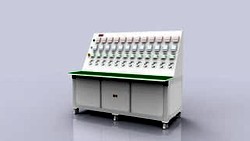
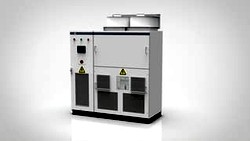
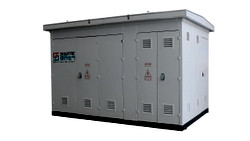
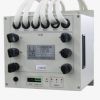
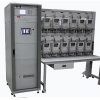
I have a question about the naming of the meter connection type.
If a meter has internal voltage and current transformers inside the case, and the meter's connection is made directly from the terminal block to the mains circuit, is this meter considered a directly connected meter or a transformer operated meter?
Thank you for your question. The term "transformer operated meters" refers only to the external connection. Those meters rely on external instrument transformers (current transformers CT and potential transformers PT) to step down the current and voltage levels for accurate measurement. You can identify them from the name plate by given transformer ratio(s) and reference to IEC 62053-22.